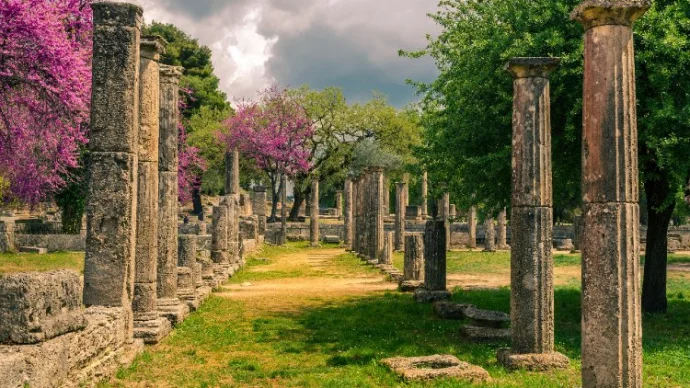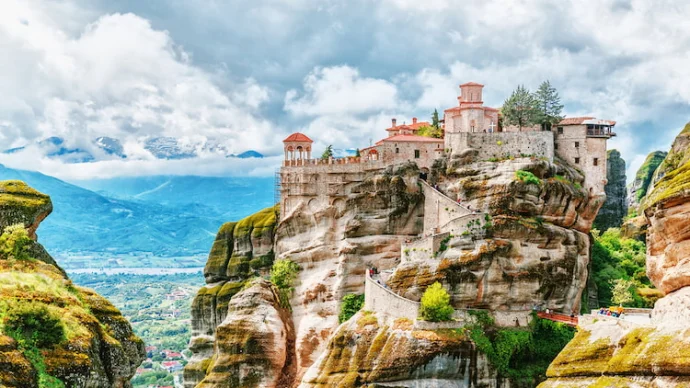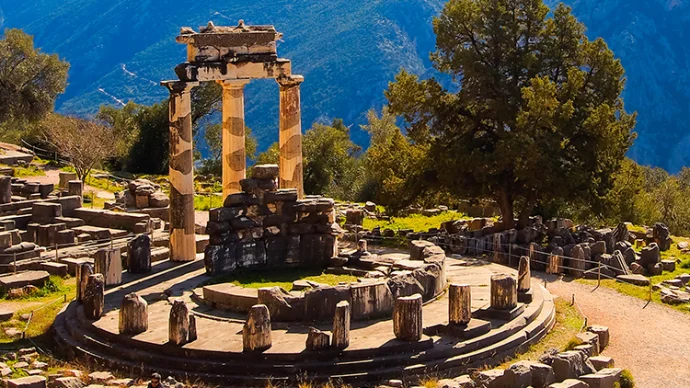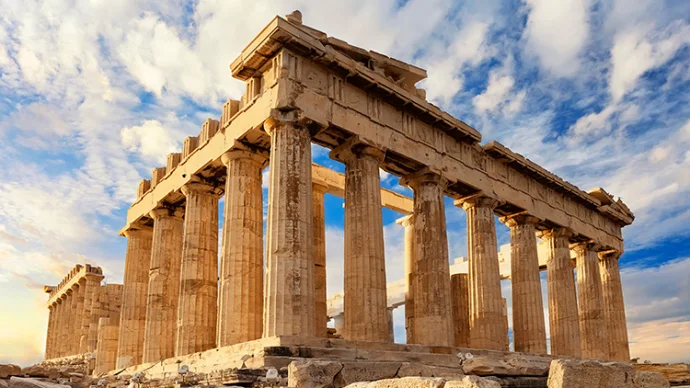
About Temple of Apollo Epicurius at Bassae
High atop a mountain in the Greek Peloponnese, the Temple of Apollo Epicurius at Bassae – also known simply at the Temple of Bassae – is not just beautifully preserved, but is often said to be one of the best examples of its kind.
Built sometime from the middle to end of the 5th Century, the magnificent Temple of Apollo Epicurius is the highlight of the site of the former sanctuary of Bassae and is a UNESCO World Heritage Site in its own right.
Temple of Apollo Epicurius at Bassae history
Set amidst the rocky, mountainous and quite remote location, the Temple of Apollo Epicurius at Bassae is oft praised for its unique blend of all three ancient styles (Doric, Ionic and Corinthian) and has been linked – albeit not confirmed – to the famed architect Ictinos (Iktinos).
Vasses (ancient Bassea) was a sacred place boasting numerous temples within the magical valleys of the Peloponnese, and within the sanctuary, all the Greek Pantheon were worshipped. The temple was built between 420 and 400 BC although archaeologists argue there lies a 7th century BC temple underneath.
The temple was in continual use by the Greeks and Romans until the 4th or 5th century AD when all pagan temples were forcibly closed by the late Christian Roman Empire.
Temple of Apollo Epicurius at Bassae today
The entire Temple of Bassae is now in a covered tent-like structure and contains many wonderful architectural features. In particular, the design plays with light (representing the god Apollo) and shadow, making the temple seem smaller than it is only to reveal the grandiose scale to those standing close.
The outside of the temple reflects the Doric style and inside you can find a central column of the Corinthian order – the oldest example of its kind. A monumental frieze from the Temple of Apollo Epicurius depicting Hercules, the Centaurs and the Amazons can be found at the British Museum.
Getting to the Temple of Apollo Epicurius at Bassae
Because of the remote mountaintop location, reaching the Temple of Apollo Epicurius at Bassae is easiest by car. From Athens, head for the A7 and then the E65, exiting at Tripotamo and heading to Eira.
Featured In

Ancient Greek Ruins
Immerse yourself in classical history by stepping into the world of Ancient Greece. Here's our pick of 10 essential sites to visit.

Greece Historic Sites
Alongside its contributions to philosophy, astrology, and medicine, Greece's sites from classical antiquity have stood the test of time. Here are 10 must-see sites for any visiting history enthusiast.

Roman Ruins Greece
Along with Ancient Greek ruins, Greece's Roman ruins hold a unique insight into the country's changeable past. Enjoy our pick of 10 that you can't miss.

Greek Temples
The ultimate guide to the very best Greek temples in the world, from Agrigento to Paestum and more, includes an interactive map surviving temples from Ancient Greece.




















